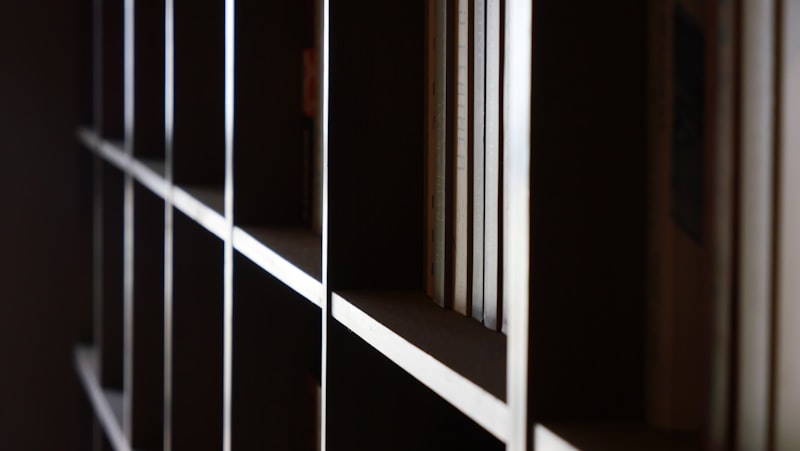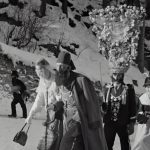Exploring the family lives of U.S. Presidents unveils a spectrum of relationships and dynamics. From George Washington’s deep familial ties and leadership within his household to Abraham Lincoln’s enduring partnership with Mary Todd Lincoln amidst national turmoil, familial bonds often provided solace and support amidst the demands of presidential duty. Similarly, the Kennedy family’s prominence highlighted a modern presidential family lifestyle, combining public service with a glamorous yet often tumultuous private life.
Beyond their roles as statesmen, U.S. Presidents have often showcased diverse hobbies that added color to their personalities. Theodore Roosevelt’s passion for the outdoors and conservation set a precedent for future environmental policies, reflecting his deep-seated interest in nature. Conversely, Franklin D. Roosevelt’s love for sailing provided him respite from the pressures of office, demonstrating how personal hobbies can serve as both relaxation and inspiration.
Moreover, examining the personal lives of U.S. Presidents underscores their humanity amidst historic achievements. Barack Obama’s devotion to basketball not only symbolized his athleticism but also connected him with Americans through a shared love of sports. Meanwhile, Ronald Reagan’s acting career before politics offered insights into his charisma and communication skills, shaping his approach to public speaking and diplomacy.
The personal lives of U.S. Presidents encompass a rich tapestry of family dynamics, hobbies, and personal passions that intertwine with their political legacies. From cherished family moments to unique hobbies that offered moments of respite, these facets reveal a multifaceted view of America’s leaders beyond their presidential roles. Each president’s personal journey contributes to a broader understanding of their character and influence, leaving a lasting imprint on both the nation and history itself.
Behind the Oval Office: Intimate Insights into U.S. Presidents’ Family Dynamics
Ever wondered what life is like for the families of U.S. presidents? The journey into the personal lives of these iconic figures reveals a tapestry of joys, challenges, and poignant moments that often go unseen amid the grandeur of politics.
The families of U.S. presidents play pivotal roles, standing as pillars of support through the tumultuous waves of political life. They are not just bystanders but integral parts of the presidential journey, sharing in the triumphs and tribulations that come with leadership.
Take, for instance, the Kennedys. The charismatic John F. Kennedy and his elegant wife, Jacqueline Kennedy Onassis, captivated the nation with their charm and grace. Behind closed doors, their family life reflected a blend of public adoration and private struggles, from JFK’s health battles to Jackie’s efforts to preserve cultural heritage.
Moving forward, the Obamas brought a sense of relatability to the White House. Barack Obama’s presidency was marked not only by historic decisions but also by the warmth of family life with Michelle Obama and their daughters, Sasha and Malia. Their presence in the public eye highlighted the importance of family values in shaping leadership.
Digging deeper, the Roosevelt family’s story unveils a legacy of resilience. Franklin D. Roosevelt, alongside his wife Eleanor Roosevelt, navigated the Great Depression and World War II while managing a family deeply ingrained in public service. Their experiences underscored the sacrifices made by presidential families in service to their country.
In contrast, the Trumps brought a business-oriented dynamic to the White House. Donald Trump’s unconventional presidency was underscored by the presence of his family, including First Lady Melania Trump and their son Barron. Their tenure sparked debates about the intersection of business, family, and political life.
Through it all, one common thread unites these diverse family narratives: the profound impact of life in the political spotlight. From the soaring highs of historical achievements to the personal lows of public scrutiny, presidential families navigate a unique landscape where every decision reverberates beyond the walls of the White House.
Understanding the complexities of U.S. presidents’ family dynamics offers a glimpse into the human side of leadership. It prompts us to reflect on the sacrifices and commitments of those who stand beside our nation’s leaders, reminding us that behind every presidency lies a story of resilience, love, and the pursuit of a better tomorrow.
From Lincoln to Biden: Exploring the Favorite Pastimes of America’s Leaders

Throughout American history, presidents have showcased diverse interests and hobbies, offering a glimpse into their personalities beyond the political arena. From the contemplative Abraham Lincoln to the athletic Joe Biden, each leader has brought their unique pastimes to the White House.
Abraham Lincoln, known for his deep intellect and reflective nature, found solace in reading and storytelling. Often seen with a book in hand, Lincoln used literature to unwind and broaden his perspectives. His love for Shakespearean plays and classic literature shaped his eloquence and wisdom, influencing his speeches and policies.
Moving into the modern era, Ronald Reagan stood out for his passion for horseback riding and ranching. Spending weekends at his California ranch, Reagan embraced the outdoors, finding renewal in the expansive landscapes. His fondness for riding horses symbolized his rugged individualism and connection to the American West.
Jumping forward to the present, Joe Biden brings a different energy to the presidential pastime palette. A fervent enthusiast of cycling, Biden often takes to the trails near his Delaware home. Cycling not only keeps him physically fit but also serves as a metaphor for his persistence and resilience in facing challenges.
Exploring these pastimes reveals more than just recreational activities; they reflect the values and character of each president. Lincoln’s introspection, Reagan’s connection to nature, and Biden’s determination—all speak volumes about their leadership styles and approaches to governance.
The Pets of Power: Meet the Beloved Animals of U.S. Presidents
Have you ever wondered who the loyal companions of U.S. Presidents were? Beyond their political roles, many Presidents had beloved pets that became part of White House history. These animals brought joy, comfort, and even controversy to the presidential residence, capturing the hearts of the nation.
One of the most famous presidential pets was Franklin D. Roosevelt’s Scottish Terrier, Fala. Known for his lively personality and constant presence by Roosevelt’s side, Fala became a beloved figure during FDR’s presidency, often accompanying him on trips and even appearing in political cartoons.
Abraham Lincoln had a deep affection for animals, and his son Tad kept a turkey named Jack as a pet. Lincoln’s compassion extended to all creatures, earning him a reputation as an animal lover in addition to his presidential legacy.
More recently, Bo and Sunny Obama, Portuguese Water Dogs, became notable fixtures during Barack Obama’s time in office. Bo, in particular, gained significant media attention, symbolizing the Obama family’s warmth and relatability.
John F. Kennedy’s children had a pony named Macaroni, which roamed the White House grounds, delighting visitors and adding a touch of whimsy to the presidential residence.
Presidential pets often reflect the personal side of their owners, humanizing them in the eyes of the public. From Theodore Roosevelt’s menagerie of animals, including a badger named Josiah and a pony named Algonquin, to George H.W. Bush’s faithful Springer Spaniel, Millie, these animals left paw prints on history.
As symbols of companionship and affection, presidential pets continue to play a role in shaping public perception of leaders. Their presence in the White House offers a glimpse into the personal lives and softer sides of those who hold the highest office in the land.
In the Footsteps of First Ladies: A Look at Their Influence and Legacy
First Ladies of the United States wield a unique, unofficial but immensely influential role. They stand not just as partners to presidents but as advocates, trendsetters, and icons in their own right. From Eleanor Roosevelt’s pioneering activism to Jacqueline Kennedy’s timeless grace, each has brought something distinct to the White House.
One of the most notable aspects of a First Lady’s legacy is her advocacy. Take Michelle Obama, whose initiatives like Let’s Move! aimed to combat childhood obesity and promote healthy living. Her impact went beyond policy, resonating deeply with families across the nation. Similarly, Nancy Reagan’s “Just Say No” campaign against drug abuse left an enduring mark on public consciousness.
Beyond advocacy, First Ladies often set cultural trends. Jackie Kennedy’s impeccable fashion sense made her a global style icon. Her influence on fashion and culture during the 1960s was profound, shaping trends that are still celebrated today. In contrast, Betty Ford’s openness about breast cancer and addiction helped shatter societal taboos, paving the way for more candid conversations about health issues.
Each First Lady brings a unique background and perspective to her role, enriching the nation’s understanding of leadership and compassion. They navigate the delicate balance between public expectations and personal passions with grace and resilience.
From Hillary Clinton’s advocacy for women’s rights to Laura Bush’s dedication to literacy, these women have carved out spaces where their voices can resonate and inspire change. Their contributions extend far beyond their time in the White House, leaving a legacy that continues to shape American society.
Presidential Retreats: Inside the Private Getaways of America’s Commanders-in-Chief
Have you ever wondered where US Presidents go to unwind and make critical decisions away from the White House hustle? Presidential retreats offer a glimpse into the private lives of America’s leaders, revealing secluded havens designed for both relaxation and state affairs.
One of the most iconic retreats is Camp David, nestled in Maryland’s Catoctin Mountains. Established in 1942, this rustic getaway has hosted presidents and their guests for decades. Its serene woodland setting provides a retreat from the hectic pace of Washington, DC, offering opportunities for outdoor activities and confidential meetings.

Another notable retreat is the Western White House, a term often used to describe various properties used by presidents on the West Coast. One such property is the Reagan Ranch in California, cherished by President Ronald Reagan as a place to recharge and connect with his roots as a rancher. Its sweeping vistas and quiet seclusion offered a stark contrast to the political stage in Washington.

In recent years, Presidents have also utilized their private homes as retreats, such as President Obama’s visits to his family home in Hawaii. These personal spaces not only serve as retreats but also reflect the presidents’ personalities and values.
Presidential retreats are not merely places of relaxation but strategic assets where leaders can refresh their minds and make crucial decisions. They symbolize the balance between public duty and private life, showcasing the human side of those who lead the nation.
This article explores the essence of presidential retreats, highlighting their significance beyond mere relaxation to encompass strategic importance and personal reflection.
Presidential Palates: Discovering the Favorite Foods of U.S. Presidents
Let’s start with Thomas Jefferson, a man of refined tastes. He had a penchant for French cuisine, introducing delights like macaroni and cheese to America. Imagine his palate savoring the creamy blend of cheese and pasta, a timeless comfort food loved by many today.
Moving forward, we encounter Abraham Lincoln, known for his humble roots but surprisingly, he had a fondness for fruit. Apples, in particular, were his favorite. Perhaps biting into a crisp apple reminded him of simpler times in the countryside, offering a refreshing break from the weighty decisions of his presidency.
Fast forward to the 20th century, and we find John F. Kennedy, a lover of New England seafood. Clam chowder and lobster stew were among his preferred dishes. Picture him enjoying a bowl of creamy chowder, filled with tender clams and hearty potatoes, a taste of his coastal upbringing.
Skipping ahead to more recent times, we encounter Barack Obama, who openly declared his love for chili. His recipe included ground beef, kidney beans, and a touch of spice, representing his multicultural background and appreciation for diverse flavors.

Each President’s favorite foods reflect not only their personal tastes but also their cultural backgrounds and historical contexts. Whether it’s a comforting bowl of macaroni and cheese or a savory bowl of chili, these dishes offer a glimpse into the lives of those who have shaped American history.
As we explore Presidential palates, we discover more than just food preferences. We uncover stories of tradition, innovation, and personal connections that have influenced the leaders of the United States. So, the next time you enjoy a favorite dish, think about the culinary choices that have shaped the nation’s highest office.
Parenting in the White House: How First Families Navigate Parenthood Under Public Scrutiny
First Families must create a nurturing environment while adapting to the demanding schedules and high expectations that come with their roles. Every decision, from education to discipline, is scrutinized by the media and the public. How do they shield their children from the spotlight while fulfilling their duties to the nation?
Michelle Obama once described the White House as a “really nice prison.” Despite its grandeur, the residence imposes limitations on personal freedom, especially for children. Privacy becomes a luxury, and every aspect of their lives—from playdates to prom nights—can become headline news.

Navigating these challenges requires a careful balance of transparency and protection. First Children often grow up surrounded by history and tradition, yet shielded from the ordinary freedoms of childhood. They might have access to world leaders and historic events, but their daily lives are tightly scheduled and heavily monitored.
Despite the pressures, many First Families strive to maintain a sense of normalcy. They carve out moments for family dinners, movie nights, and holiday celebrations amid the chaos of political life. These moments serve as anchors, grounding both parents and children in the midst of a whirlwind of events.
In essence, parenting in the White House is a blend of privilege and constraint, where the responsibilities of leadership intersect with the joys and challenges of raising a family. It’s a testament to resilience and adaptability, where each First Family finds their unique way to navigate parenthood under the unrelenting gaze of the public eye.
Frequently Asked Questions
How did U.S. Presidents balance family life with their duties?
Learn how U.S. Presidents manage their family responsibilities alongside their official duties, exploring historical strategies and personal approaches used to maintain a work-life balance in high-profile leadership roles.
How did the personal lives of U.S. Presidents influence their leadership?
Learn how the personal lives of U.S. Presidents shaped their leadership styles and decision-making, influencing pivotal moments in American history.
What were the family dynamics like for U.S. Presidents in the White House?
Discover the unique family dynamics of U.S. Presidents living in the White House. Explore how presidential families navigate public and private life, their roles in shaping national history, and the impact of these dynamics on American society.
Did any U.S. Presidents have notable pets?
Learn about U.S. Presidents and their notable pets. Explore fascinating stories of presidential pets throughout history, from beloved dogs to exotic animals, showcasing the unique relationships between leaders and their animal companions.
What were the favorite hobbies of past U.S. Presidents?
Discover the favorite hobbies of past U.S. Presidents. Learn about their diverse interests outside of politics, ranging from sports and outdoor activities to reading, music, and painting.


